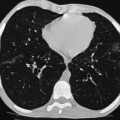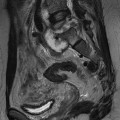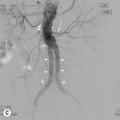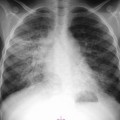Jim Reekers Interventional radiology (IR) is a recognised subspecialty of radiology both within the Union of European Medical Specialties (UEMS) and the European Society of Radiology (ESR). IR is unique and distinct from all other surgical, radiological and medical subspecialties and specialties. IR is performed by trained IR specialists who have expertise in interpreting diagnostic imaging as well as expertise in image-guided minimally invasive procedures and techniques as applied to various diseases and organs. There are a huge variety of therapeutic procedures performed by IR. They can be divided into broad categories of vascular, non-vascular and oncological interventions. For a more detailed description of IR and what interventional radiologists do, please read the Global Statement on IR.1 Training in IR should be under an accredited training programme and the minimum length of training is 2 years. In several countries there are special training curricula for IR and there is also a European IR training curriculum which can be viewed at <http://www.cirse.org>. There is a European IR examination which can be taken by every interventional radiologist after the completion of training. This examination is called the European Board of Interventional Radiology (EBIR) and is held under the auspices of an independent European Board. Maintenance of IR skills by performing an adequate number and range of procedures and demonstration of continuous medical education by CME certification is an essential requirement. Interventional radiology involves interaction with patients and their families, taking decisions and judging outcome and risks. Most important is the clinical evaluation and management of patients with diseases or conditions amenable to image-guided interventions. The IR as a clinician should keep the following questions in mind when entering into a patient consultation: Is the proposed procedure necessary? Is the patient suitable or fit for the procedure? What is the potential for harm? Are there better alternatives for the patient? For these reasons an IR should be clinically trained. Clinical involvement may include seeing patients in consultation particularly for complex treatments (see the next section), but this is not always feasible and for more routine work it is often not necessary. It is becoming more common for IRs to have their own clinics and beds. Access to day case and inpatient beds is necessary to optimise provision of an IR service. An on-call service should also be provided on a 24/7 basis, which means having an adequate number of IRs available or providing an on-call service through formation of a network of IRs from adjacent hospitals. Informed consent is an essential requirement in contemporary medicine, especially in cases where there is clinical equipoise, as is sometimes the case in IR treatments. Informed consent should be based on an ethical assessment of the clinical situation, including the invasiveness of the procedure, the clinical indications and not simply on practical issues. Focusing on the whole decision-making process, effective communication and an individualised approach to consent is essential, also because it will reduce much of the patient’s anxiety for the procedure to follow. A combination of information both written and verbal is often the best approach. Informed consent should ideally be obtained by the operator performing the procedure or, if this is not possible, the task can be delegated to a suitably trained doctor. Informed consent should also be obtained at least 24 h before any procedure so that the patient has time to digest the information and make an informed decision. The risks, intended benefits and alternatives should be discussed with the patient and any follow-up care that is planned should be itemised. Informed consent is a prerequisite for good clinical IR practice as IR is increasingly the first line of treatment and the interventional radiologist the primary clinician.1 In 2009, Haynes et al. published the results of a study which implemented a 19-item surgical safety checklist to determine whether this checklist could reduce complications and deaths associated with surgery.2 A significant reduction in the rate of death and complications occurred after the introduction of the surgical safety checklist. The death rate fell from 1.5% before the introduction of the checklist to 0.8% afterwards. The complication rate fell from 11 to 7%. Although complications in IR are significantly fewer than with surgery, patient contact before IR procedures is often quite short, and sometimes it is difficult for the interventionalist to gather all the necessary clinical information in a timely manner. This increases the risk of complications. A standarised checklist has the advantage of ensuring that human error, in terms of forgetting key steps in patient preparation, intraprocedural care and postoperative care are not overlooked.3 This checklist can be downloaded and modified through <http://www.cirse.org/files/files/Profession/IR_Checklist_new.pdf>. However, the patient safety checklist is only one part of a comprehensive patient safety strategy. Regular morbidity and mortality meetings, reporting of errors, participation in hospital risk management committees and a culture of patient safety are all important items in the overall strategy for patient safety. In an ideal world, competence should match performance but this is not always the case. Performance may be hindered by both system and individual influences. Individual influences on performance can be aided by a lifelong commitment to learning, while system influences may be difficult to deal with and may involve not peforming some procedures if the necessary support is not available locally. Management of coagulation status and haemostasis risk in percutaneous image-guided interventions is very important. Haemorrhage is a major complication of IR procedures and guidelines for the management of coagulation status and haemostasis risk are available.4
Basic Clinical Requirements of Interventional Radiology
IR
Training
Clinical Involvement
Informed Consent
IR Checklist
Coagulation
![]()
Stay updated, free articles. Join our Telegram channel

Full access? Get Clinical Tree


Basic Clinical Requirements of Interventional Radiology
Chapter 83






